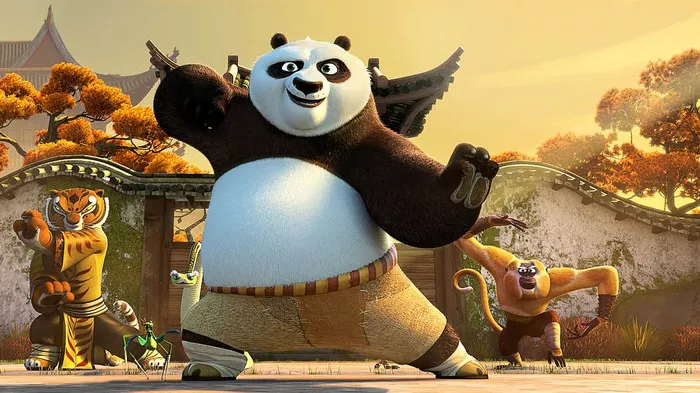“Kung Fu Panda,” the beloved animated film franchise created by DreamWorks Animation, has captured the hearts of audiences worldwide with its humor, heartwarming storytelling, and stunning animation. At the center of the franchise is Po, a lovable panda who dreams of becoming a kung fu master and embarks on an epic journey of self-discovery and heroism. But where exactly does Kung Fu Panda take place? In this comprehensive exploration, we delve into the origins and setting of the Kung Fu Panda universe, uncovering the rich tapestry of locations, cultures, and inspirations that bring the world of Po and his friends to life.
The Setting of Kung Fu Panda: The Valley of Peace
The primary setting of the Kung Fu Panda franchise is the fictional Valley of Peace, a lush and vibrant valley nestled among towering mountains and rolling hills. Located in ancient China, the Valley of Peace serves as the tranquil home of Po and his fellow villagers, as well as the backdrop for many of the franchise’s adventures and conflicts.
The Valley of Peace is depicted as a picturesque landscape dotted with traditional Chinese architecture, serene bamboo forests, and terraced rice paddies. It is a place of natural beauty and harmony, where the residents live simple yet fulfilling lives in harmony with nature and each other.
The Influence of Chinese Culture and History
While the Valley of Peace is a fictional creation, it draws heavily from Chinese culture, history, and mythology. From the architecture of its buildings to the design of its landscapes, the world of Kung Fu Panda is steeped in the rich traditions and aesthetics of ancient China.
One of the most prominent influences on the Kung Fu Panda franchise is the art of kung fu itself. Kung fu, which translates to “skill achieved through hard work,” is a martial art that originated in China and has a long and storied history. The film’s creators worked closely with martial arts experts to ensure authenticity in the depiction of kung fu techniques, styles, and philosophy, further grounding the world of Kung Fu Panda in Chinese culture and tradition.
In addition to kung fu, Kung Fu Panda also draws inspiration from various aspects of Chinese folklore and mythology. Characters such as Master Oogway, the wise and venerable tortoise who serves as the spiritual leader of the Valley of Peace, and Tai Lung, the formidable snow leopard warrior with a tragic past, are inspired by traditional Chinese legends and beliefs.
Exploring Other Locations in the Kung Fu Panda Universe
While the Valley of Peace serves as the central setting of the Kung Fu Panda franchise, the world of Po and his friends extends far beyond its borders. Throughout the films and accompanying media, audiences are introduced to a variety of other locations, each with its own distinct culture, geography, and inhabitants.
The Jade Palace: Located at the heart of the Valley of Peace, the Jade Palace serves as the training ground and home base for the Furious Five—Tigress, Monkey, Mantis, Viper, and Crane—and their master, Shifu. Perched atop a steep mountain peak, the Jade Palace is a breathtaking architectural marvel adorned with intricate carvings and adorned with ornate decorations.
Gongmen City: Introduced in “Kung Fu Panda 2,” Gongmen City is a bustling metropolis located on the shores of a vast lake. It is the cultural and economic hub of ancient China, known for its bustling markets, towering skyscrapers, and grand palaces. Gongmen City is also home to the kung fu council, a group of esteemed martial arts masters who oversee the city’s defense and security.
The Spirit Realm: In “Kung Fu Panda 3,” Po embarks on a journey to the Spirit Realm, a mystical realm inhabited by powerful spirits and celestial beings. The Spirit Realm is depicted as a surreal and ethereal landscape, characterized by floating islands, shimmering waterfalls, and vibrant colors. It serves as the backdrop for Po’s quest to master the art of chi and unlock his true potential as the Dragon Warrior.
The Global Appeal of Kung Fu Panda
One of the reasons for the widespread popularity of Kung Fu Panda is its universal themes and relatable characters, which resonate with audiences of all ages and backgrounds. While the franchise is deeply rooted in Chinese culture and tradition, its themes of friendship, perseverance, and self-discovery transcend cultural boundaries and resonate with viewers around the world.
Furthermore, the visually stunning animation, fast-paced action sequences, and lighthearted humor of the Kung Fu Panda films appeal to audiences of all ages, making it a franchise that can be enjoyed by the whole family.
In Conclusion: The World of Kung Fu Panda
In conclusion, the world of Kung Fu Panda is a vibrant and enchanting universe that draws inspiration from Chinese culture, history, and mythology. From the tranquil beauty of the Valley of Peace to the bustling streets of Gongmen City and the surreal landscapes of the Spirit Realm, the Kung Fu Panda franchise offers a rich tapestry of locations, cultures, and characters for audiences to explore and enjoy.
Through its compelling storytelling, stunning animation, and universal themes, Kung Fu Panda has captivated audiences worldwide and become a beloved and enduring franchise that continues to entertain and inspire generations of fans. Whether exploring the Valley of Peace with Po and his friends or embarking on epic adventures in distant realms, the world of Kung Fu Panda is a place of wonder, excitement, and endless possibilities.


